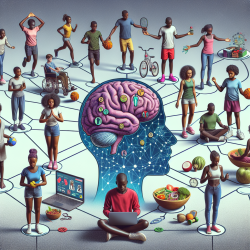Transforming IEP Meetings with Data-Driven Strategies
As mental health professionals working in schools, we are constantly seeking ways to improve the outcomes of Individualized Education Program (IEP) meetings. With the rise of speech therapy telepractice and online therapy services, there's a wealth of data at our fingertips that can revolutionize how we approach these critical meetings.
Understanding the Importance of Data in IEP Meetings
Data-driven decisions have become the cornerstone of effective IEP planning. By leveraging data, we can create tailored strategies that meet the unique needs of each child. Research has shown that data-informed IEPs lead to more measurable and successful outcomes. This is particularly true in speech therapy telepractice, where detailed progress tracking is readily available.
Key Data Points to Consider
When preparing for an IEP meeting, consider the following data points to ensure a comprehensive and effective plan:
- Progress Monitoring: Utilize online platforms to track the child's progress over time. This can highlight areas of improvement and those needing additional focus.
- Benchmark Assessments: Regular assessments can provide a baseline to measure growth and set realistic goals.
- Feedback from Telepractice Sessions: Incorporate insights from online therapy sessions to adjust strategies in real-time.
- Parental and Teacher Input: Gathering qualitative data from those who interact with the child daily can provide context to the quantitative data.
Integrating Telepractice into IEPs
Online therapy services have transformed the way we deliver speech therapy, offering flexibility and accessibility that traditional methods may lack. Incorporating telepractice into IEPs not only supports diverse learning environments but also aligns with modern educational trends.
Here are some benefits of integrating telepractice into IEPs:
- Flexibility: Sessions can be scheduled at convenient times, reducing the disruption to the child's school day.
- Accessibility: Children in remote areas can access quality therapy services without the need for travel.
- Engagement: Digital platforms often include interactive tools that can enhance engagement and motivation.
Creating a Collaborative Environment
The success of an IEP meeting hinges on collaboration. Encouraging open communication between therapists, teachers, and parents ensures that everyone is on the same page and working towards common goals. Here are some tips to foster collaboration:
- Regular Check-Ins: Schedule consistent meetings to discuss progress and make necessary adjustments.
- Shared Goals: Develop goals collaboratively to ensure they are realistic and achievable.
- Open Communication Channels: Use platforms that allow for easy sharing of information and updates.
Inspiring Outcomes Through Data-Driven Decisions
By harnessing the power of data and embracing innovative practices like telepractice, mental health professionals can inspire transformative outcomes for children. IEP meetings become not just a requirement, but an opportunity to make a meaningful impact on a child's educational journey.
As we continue to navigate the evolving landscape of education and therapy, let us remain committed to using data to drive our decisions, ensuring that every child receives the support they need to thrive.










